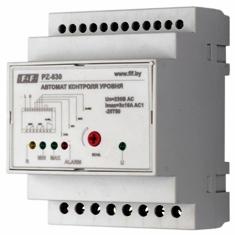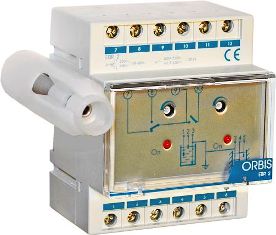Categories: Home automation, Electrical Reviews
Number of views: 102664
Comments on the article: 3
Level monitoring relays for automation of pumping units
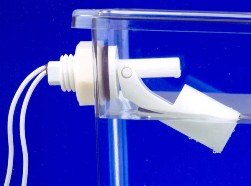 In addition to general-purpose electrical apparatus (starters, intermediate relays, switches, etc.) for the automation of pumping installations, special monitoring and control devices are used, for example, pressure switch, level control relays, inkjet relays, etc.
In addition to general-purpose electrical apparatus (starters, intermediate relays, switches, etc.) for the automation of pumping installations, special monitoring and control devices are used, for example, pressure switch, level control relays, inkjet relays, etc.
Level control relays regulate the operation of pump starters and valves to control fluid levels. Such devices are able to maintain a fixed water level in tanks.
Modern liquid level control relays are electronic devices, most often of modular design, receiving signals from sensors, processing them according to a certain algorithm and commuting actuating elements connected to the relay output contacts (solenoid valves, electric motors of pumps).
Since the maximum switched current of the output circuits of electronic level control relays usually does not exceed 10 A, for switching powerful loads use magnetic starters. In this case, the level switch controls the starter coil, and the starter controls the actuating elements of the pump unit with its power contacts.
Electronic level control relays work with electrode and float sensors, pressure gauges, radioactive sensors, etc.
Electrode level sensor
It is used to control the level of electrically conductive fluids. Principle of operation: monitoring the resistance of water between single-pole immersed electrodes, for which an alternating voltage is used.
Consists of one small electrode and two long electrodes fixed in a junction box. One small electrode is the contact of the upper water level, and long ones are the lower water level. The sensor is connected to the level switch and to the pump motor control circuit by wires.
If water comes into contact with a small electrode, the pump starter is turned off. When the level drops to long electrodes, the pump turns on.
Float level sensor
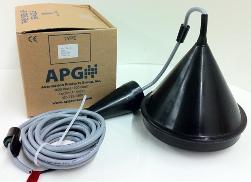 Used to control the water level in non-aggressive fluids. A float is immersed in an open container, which is suspended on a flexible cable and balanced by a load. Two switching supports are fixed on the cable, with the help of which the rocker of the contact device rotates at the maximum water levels in the tank. This rocker closes contacts that turn the pump motor on or off.
Used to control the water level in non-aggressive fluids. A float is immersed in an open container, which is suspended on a flexible cable and balanced by a load. Two switching supports are fixed on the cable, with the help of which the rocker of the contact device rotates at the maximum water levels in the tank. This rocker closes contacts that turn the pump motor on or off.
In the case of a closed container, the float is connected by its lever to the axis of the lever. An axis with a specific seal is passed into space through the wall of the housing, where the contact part of the sensor is located. Through the wall of the tank, wires are drawn from the contacts.
In most cases, suitable sensors come with a level switch. After purchasing such a set, the consumer only needs to connect and configure everything correctly.
The following are devices that are highly reliable and have excellent operational parameters.
Relay RKU-1M - controls the liquid level and is used in automatic control of filling and draining containers and in protection schemes. Main characteristics: maximum switched power 3.5 W, power 220V, number of sensors 3, one change-over contact, maximum distance from sensor to relay 100 m.

Fig. 1. Relay RKU-1M
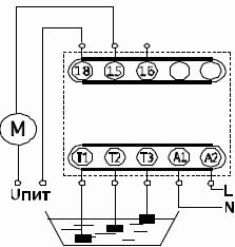
Fig. 2. Scheme of connecting the pump to RKU-1M
Water level switch ROS-301 - controls three levels of electrically conductive liquids through three independent channels in one or different capacities.
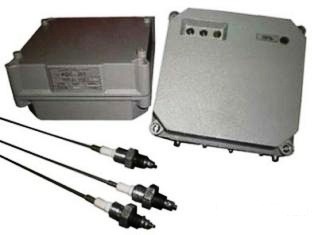
Fig. 3. ROS-301 relay
Single Level Water Level Relay PZ-828 - has adjustable sensitivity, voltage - 230V, maximum output current - 16A.The device uses a switching contact.
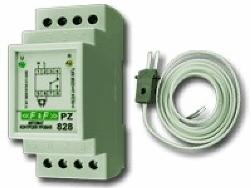
Fig. 4. Relay PZ-828
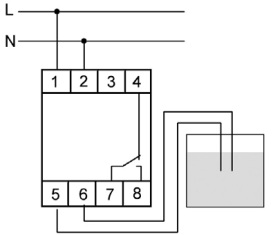
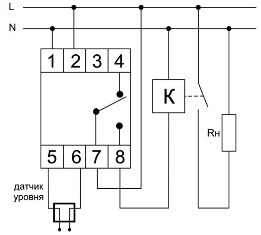
Fig. 5. PZ-828 relay connection diagrams (directly to the load and through a magnetic starter)
Two-level relay PZ-829 is an automatic machine with adjustable sensitivity. This electronic device is able to monitor the presence of fluid on two levels.
Three-level relay PZ-830 - controls and maintains the set level of conductive fluid by controlling the electric motor of the pumping unit. A three-level machine is capable of controlling the presence of liquid at three levels, where the third level is emergency.
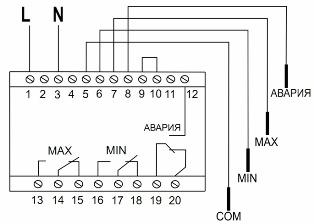
Fig. 6. Wiring diagram for the four-level level switch PZ-830
Four level relay PZ-832 - controls and maintains the level of conductive liquids in tanks, water towers, pools, etc. by controlling the electric motors of the pumps.
Liquid level switch equipped with three sensors EBR-1 - An electronic modular relay with a maximum distance between the sensors of 100 meters. It can be used for public water bodies (management of filling and discharge of a tank or well). Sensors supplied with the liquid level control relay are connected to the mechanism.
Main characteristics: power 3.5 VA, three sensors, maximum sensitivity 50 KOhm, power 230 V, operating temperature -100 ° C - + 450 ° C, IP20 protection.
EBR-1 relay
Relay equipped with six sensors EBR-2 - A specially designed modular monitoring relay used in wells and tanks. Also, this relay has many settings, notification of the achievement of the minimum and maximum indicators of the water level, the sensors have a high sensitivity to electrical conductivity of the liquid.
Six sensors are included. Due to its cost, this monitoring relay is an ideal option for modern water level monitoring.
See also at bgv.electricianexp.com
:

